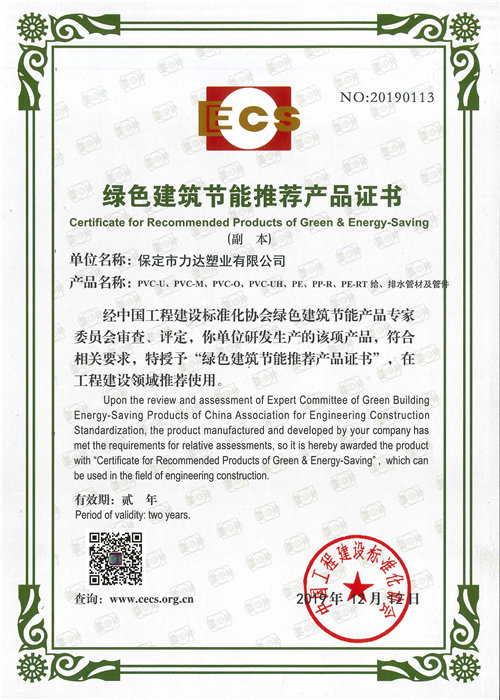Sep . 28, 2024 22:25 Back to list
HDPE Pipe Couplings for Reliable and Strong Connection Solutions in Various Applications
Understanding HDPE Pipe Couplings An Essential Component for Efficient Water Management
High-Density Polyethylene (HDPE) pipes are increasingly becoming the preferred choice for various applications in water management and transportation systems. Known for their durability, flexibility, and resistance to corrosion, HDPE pipes require efficient coupling solutions to ensure that they function optimally. This article explores the significance of HDPE pipe couplings, their types, installation methods, and benefits, providing valuable insights for anyone looking to enhance their water management systems.
What is an HDPE Pipe Coupling?
An HDPE pipe coupling is a fitting that connects two pieces of HDPE pipe together. Couplings serve critical roles in water distribution systems, agricultural irrigation, and various industrial applications. They ensure a tight seal between pipes, maintaining the integrity of the system while preventing leaks and pressure losses. The effectiveness of an HDPE piping system depends significantly on the quality and type of coupling used.
Types of HDPE Pipe Couplings
There are several types of couplings designed for HDPE pipes, each serving specific purposes
1. Socket Fusion Couplings This type uses heat to fuse the ends of two pipes together. They are ideal for small to medium-sized pipes and provide a seamless connection. Socket fusion is commonly employed in both residential and commercial applications.
2. Butt Fusion Couplings Butt fusion involves aligning the ends of the pipe pieces and heating them until they soften and can be fused together. This method is preferable for larger diameter pipes and is widely used in municipal water systems and industrial projects, ensuring a strong, leak-free joint.
3. Electrofusion Couplings These couplings come with built-in heating elements that soften the pipe surfaces when electricity is applied. Electrofusion is suitable for both small and large pipe sizes and offers a high level of reliability, especially in situations where space is limited and precise alignment is critical.
4. Mechanical Couplings These couplings use mechanical means, such as clamps and bolts, to secure two pipe ends together. They are particularly useful for repairs or when connecting HDPE pipes to different materials, such as metal or PVC.
5. Flanged Couplings Flanged couplings involve two flanges bolted together with a gasket in between to ensure a tight seal. They are often used in industrial applications where frequent disassembly is required.
hdpe pipe coupling

Installation Methods
The installation of HDPE pipe couplings varies based on the type. For socket and butt fusion, specialized fusion equipment is required to ensure the correct temperature and pressure are applied. This process is crucial as improper fusion can lead to weak joints that may fail under pressure. Electrofusion joints also necessitate specific equipment and trained personnel to ensure a reliable connection.
Mechanical couplings are generally simpler to install, requiring basic tools. However, care must be taken to ensure that the fitting is correctly aligned and that the appropriate torque is applied to avoid leaks. Flanged couplings demand precise alignment of the flanges and proper bolting techniques to ensure a secure connection.
Benefits of Using HDPE Pipe Couplings
1. Durability HDPE pipe couplings are resistant to a wide range of chemicals, ensuring long-lasting performance even in harsh environments. This durability translates into reduced maintenance costs over time.
2. Hydraulic Efficiency The smooth internal surfaces of HDPE couplings minimize turbulence and pressure losses in fluid transport, leading to more efficient systems.
3. Ease of Installation Many HDPE coupling methods, particularly electrofusion and mechanical couplings, simplify the installation process, saving valuable time and labor costs.
4. Flexibility HDPE pipes can expand and contract without compromising the integrity of the couplings, making them suitable for various environmental conditions.
5. Cost-Effectiveness While the upfront costs of HDPE systems might be higher than traditional materials, the long-term savings in maintenance and durability make them more cost-effective overall.
Conclusion
HDPE pipe couplings are critical components in the stability and efficiency of piping systems. Whether for residential, commercial, or industrial applications, selecting the right type of coupling and following proper installation methods are essential for preventing leaks and ensuring reliable performance. With their many advantages and the growing trend towards sustainable water management solutions, HDPE pipes and couplings are poised to play an increasingly vital role in infrastructure development worldwide.
-
High-Quality PPR Pipes and Fittings Durable ERA PPR & PVC PPR Solutions
NewsJul.08,2025
-
Black HDPE Cutting Board - Durable, Non-Porous & Food Safe HDPE Plastic Cutting Board
NewsJul.08,2025
-
High-Quality CPVC Panel Durable HDPE & PVC Panels Supplier
NewsJul.08,2025
-
Double PE Welding Rod Supplier - High Strength, Durable & Versatile Welding Solutions
NewsJul.07,2025
-
High-Quality PVC-O Pipe Supplier Durable 75mm PVC Pipe & Connections Leading PVC Pipe Company
NewsJul.07,2025
-
HDPE Drainage Pipe Supplier – Durable & Corrosion-Resistant Solutions
NewsJul.06,2025

